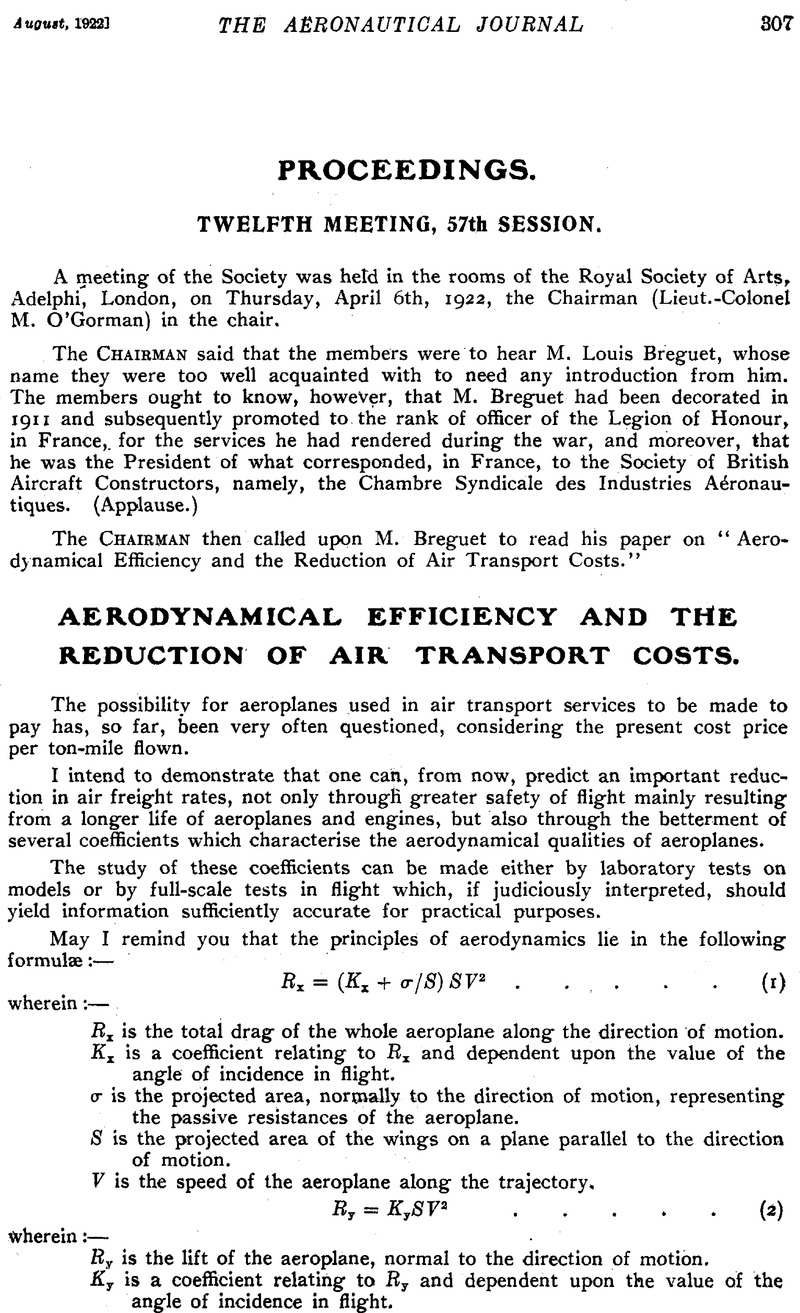No CrossRef data available.
Published online by Cambridge University Press: 14 September 2016

page 309 note * It means that the nominal power of the engines, multiplied by the propeller efficiency, must be equal to about two to three times the minimum powe.r necessary for horizontal flying at sea .level.
page 309 note † The coefficient 1.1 is the average of data registered on several hundred flights.
page 310 note * Several companies now have to spend an average of 0.50 francs per kilometre for the crew, but that is because their lines are rather short ones (say, 375 kilometres on Paris-London), and also that the crew only flies one single trip a day, and not every day. With the present minimum of salary one has to guarantee them, as also with the number of pilots one has to keep according to subsidies-regulations, these pilots are far from rendering efficient work (from “ distances flown ” point of view). The figures I have taken of 0.35 francs apply to lines of some 800 kilometres, a few of which are now in contemplation.
page 311 note † As a matter of fact, one should deduce from that weight some 180 to 200 kilogrammes for the accommodation of the surplus of passengers and freight. But on another side one can reasonably expect that the daily progress made in the manufacture of aeroplanes and the use of stronger material will allow saving on dead weight of practically the same amount.
page 312 note * Which being probably much more heavily loaded per square metre will be able' to reach speeds of about 150 m.p.h.
page 313 note * If the aeroplanes have been built from the same drawings read on a larger scale.